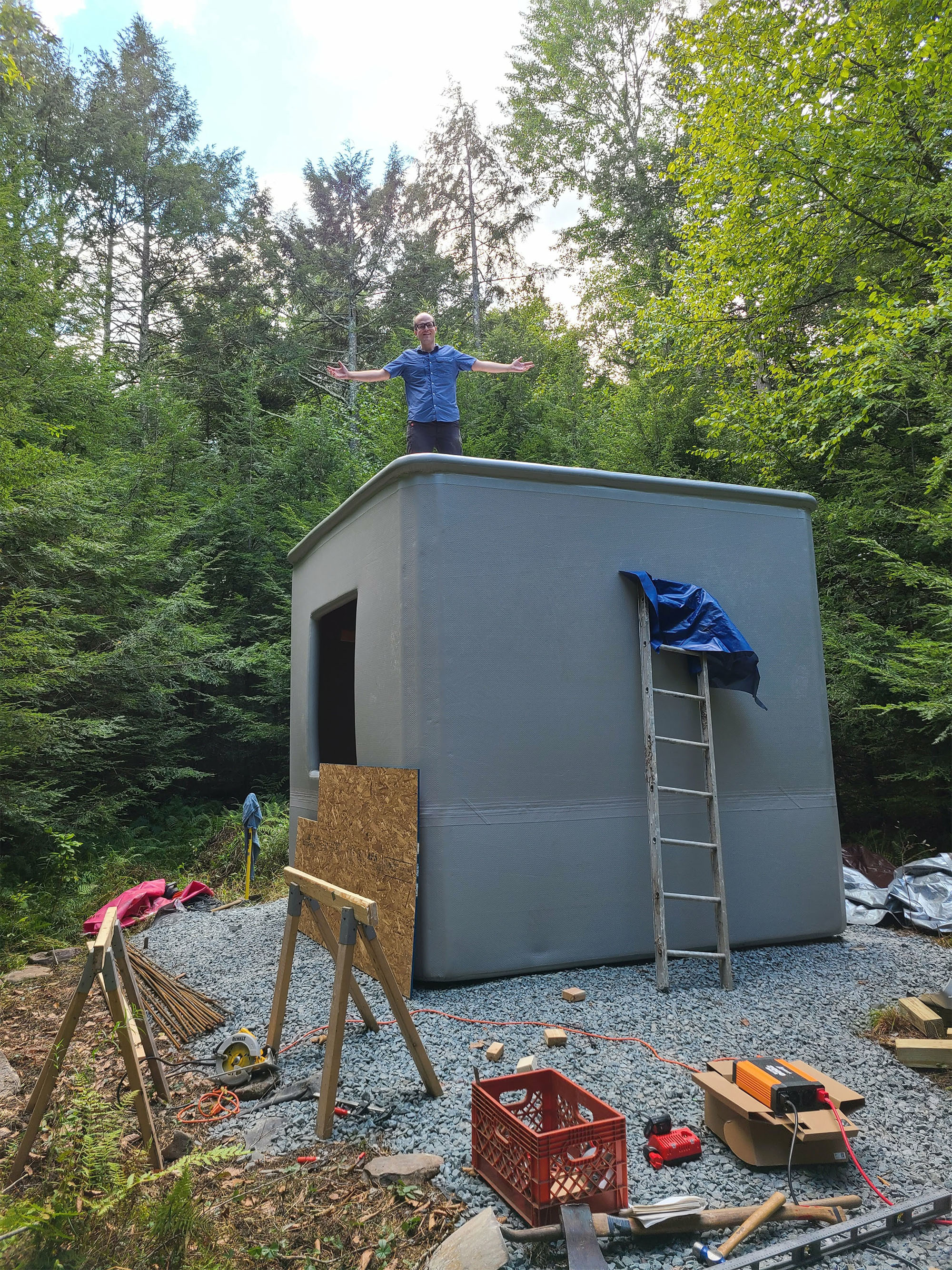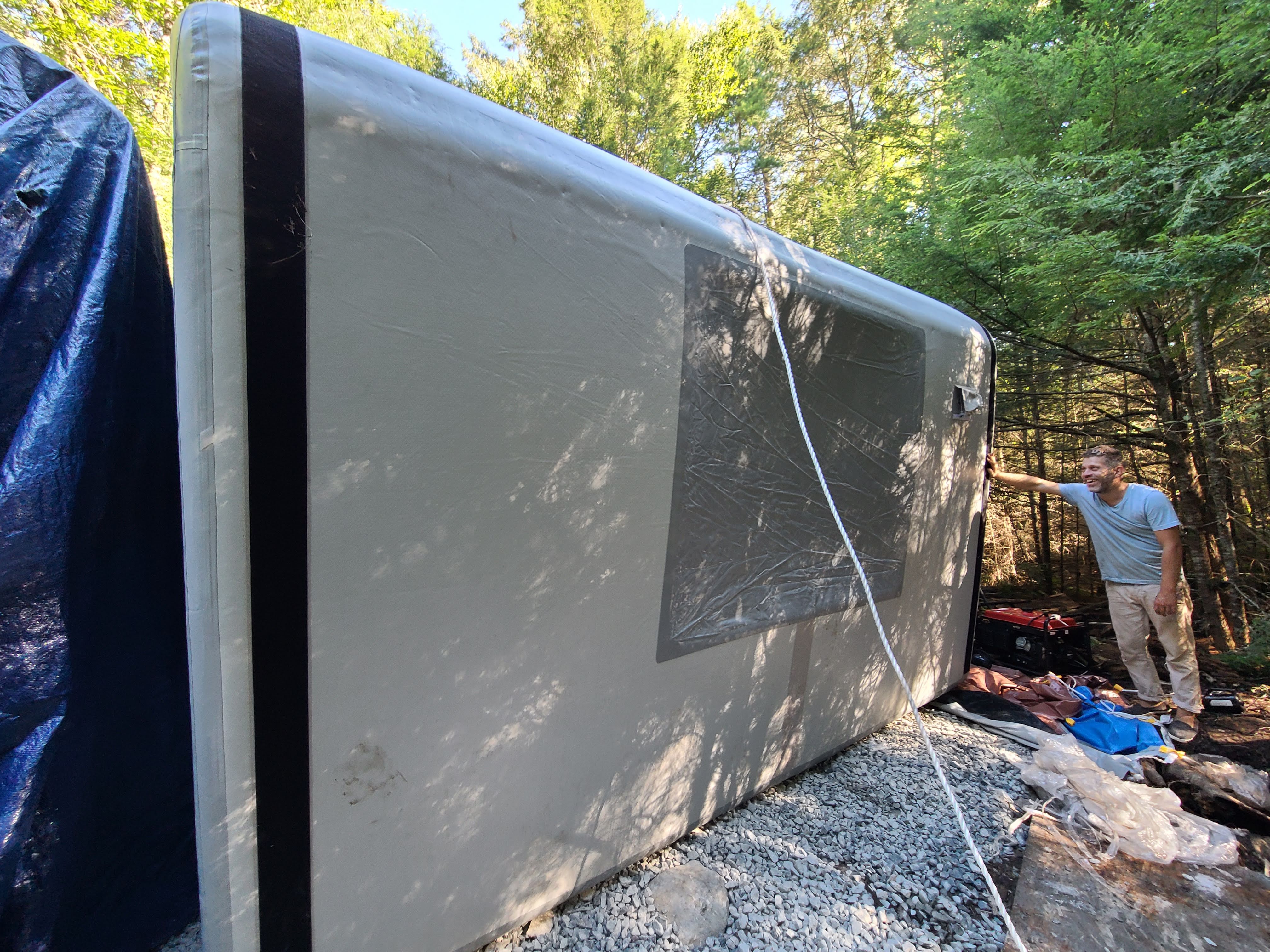A couple of years ago, Alex Bell came across a type of material called drop stitch: two pieces of woven fabric joined by countless fine threads. The form can be inflated into a sturdy, rigid structure. Heard of an inflatable paddle board? That’s drop stitch.
“I looked at it and thought that’s the same formwork we use on construction job sites, but it’s not wood or plastic, it’s woven material,” Bell says.
That lightbulb moment led Bell and his business partner, Tyler Robins, to cofound Automatic Construction. Their patent-pending technique, called Inflatable Flexible Factory Formwork, inflates plastic drop-stitch material and then pours concrete inside the two outer layers, forming a house’s structure.
Bell, the company’s CEO, says his method costs just 20% of the traditional expense of installing a house’s slab, walls, roof, and waterproofing.
INFLATABLE CONCRETE BUILDINGS
In an offsite factory, Automatic Construction prefabricates drop-stitch forms comprising two PVC layers that sandwich thousands of nylon threads. Each rolled-up form measures only about 1 foot high and wide and 3 feet long, and weighs just about 200 pounds. The company transports the compact package to the job site, where the form is unrolled onto gravel, filled with air, and then pumped full of concrete—creating four-inch concrete walls.
Setting up the form takes just about 10 minutes, and filling it with concrete requires two to five hours, depending on the size. “We take a process that usually requires days if not weeks of onsite labor, and we’ve taken that down to a day,” Bell says.
The form has an inner, air-filled chamber that supports the concrete as it dries and strengthens, which takes about five to seven days. That inner material then gets removed (and can be reused).
What’s left are the home’s slab, roof, and walls, with openings for the windows and doors. The company also inserts rebar into the structure for reinforcement, though in the future it plans to perform this step in the factory. Leaving the outer PVC layer in place provides the structure’s air and water sealing, so there’s no need for house wrap.

The rest of the home’s construction involves the typical process and trades: the electrical and mechanical systems, insulation, drywall, and siding. Even with that traditional labor, Bell says Automatic Construction reduces the overall construction cost by about 30%.
“The thing that’s most important to me is solving the housing productivity and affordability crisis, and that comes down to time and cost,” he says. The son of New York City real estate developers, Bell grew up hearing his father talk about the construction industry’s productivity gap compared to other industries.
Offsite manufacturing helps solve the productivity challenge of building the formwork: “Our air pumps replace that labor on the jobsite,” Bell says.
As for cost: Drop-stitch fabric is “dirt cheap,” he says. Ever since Goodyear used a drop-stitch method to build its Inflatoplane in the 1950s, manufacturing the material has become less expensive and more advanced, Bell says. He points to a long history of using fabric for concrete formwork, citing organizations such as Monolithic, which uses inflatable fabric forms to construct domes.
“Now, drop stitch is literally pennies on the yard in terms of material,” Bell says. And because it’s so lightweight, it’s also inexpensive to transport.
Check out this short clip from Automatic Construction of the concrete filling in action:
Also, Automatic Construction doesn’t require expensive onsite robotics or time-consuming upskilling of the workforce. It uses the same concrete line pumps familiar to any contractor who works with concrete. “It intentionally fits into the ecosystem of construction,” Bell says.
To address sustainability concerns, Automatic Construction is working with concrete companies that are experimenting with more sustainable cement alternatives. And while the company currently uses PVC, Bell says his manufacturing process can work with recycled plastic and non-petroleum-based alternatives.
Almost two years ago, Automatic Construction started off by building tiny structures only about a foot high and wide. With funding from Brick & Mortar Ventures, Automatic Construction recently emerged from startup-stealth mode. For its first large-scale prototypes, the New York-based company built three ADUs of 100 to 300 square feet in the Hudson Valley area.
By the middle of 2023, Automatic Construction aims to build its first single-family homes of 1,200 to 1,500 square feet.






